If you fly a small DJI Mini on an abandoned lot in the suburbs of Shanghai risks receiving a fine up to 20,000 RMB . I’ve delved a bit into the rules for flying drones in China and will explain how to properly register with the Civil Aviation Administration, study the theory, and pass the exam.
Types of Drones
In China, drones are divided into several categories:
- Micro (微型): Weight up to 250 g, speed up to 40 km/h
- Light (轻型): Weight up to 4 kg, speed up to 100 km/h
- Small (小型): Up to 15 kg
- Medium (中型): Up to 150 kg
- Large (大型): Over 150 kg
 For everyday users, the first two categories (Micro and Light) are of interest, while the last three are generally not available for individuals, so I won’t consider them. It’s worth noting that weight is not the only criterion used to determine the type of drone. For example, the above-mentioned DJI Mini is classified as Ultra Light (超轻) and weighs less than 249 g, but due to its speed, it falls into the second category.
For everyday users, the first two categories (Micro and Light) are of interest, while the last three are generally not available for individuals, so I won’t consider them. It’s worth noting that weight is not the only criterion used to determine the type of drone. For example, the above-mentioned DJI Mini is classified as Ultra Light (超轻) and weighs less than 249 g, but due to its speed, it falls into the second category.
Flight Zones
For small recreational drones, the sky is divided into two categories:
- Free Flight Zone (适飞空域): Here, you can simply launch your drone without notifying anyone. Of course, unless there are specific signs indicating that flying is prohibited, or if some other temporary restrictions are in place.
- Restricted Flight Zone (管制空域): In this zone, you need to obtain permission to fly in advance.
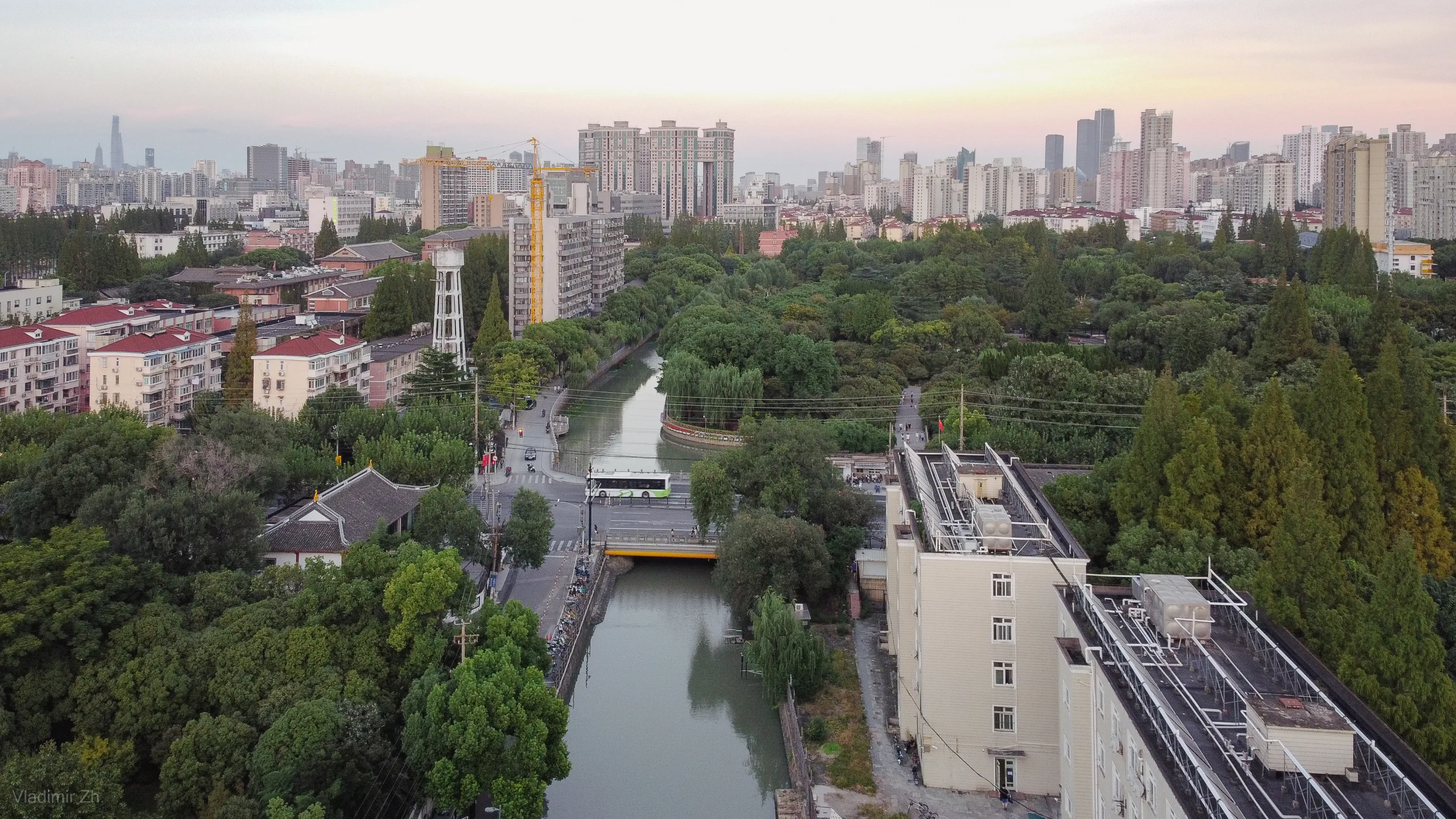 To understand how many free zones there are in a Chinese city, you can look at this map. The turquoise area marks the free zone over Shanghai:
To understand how many free zones there are in a Chinese city, you can look at this map. The turquoise area marks the free zone over Shanghai:
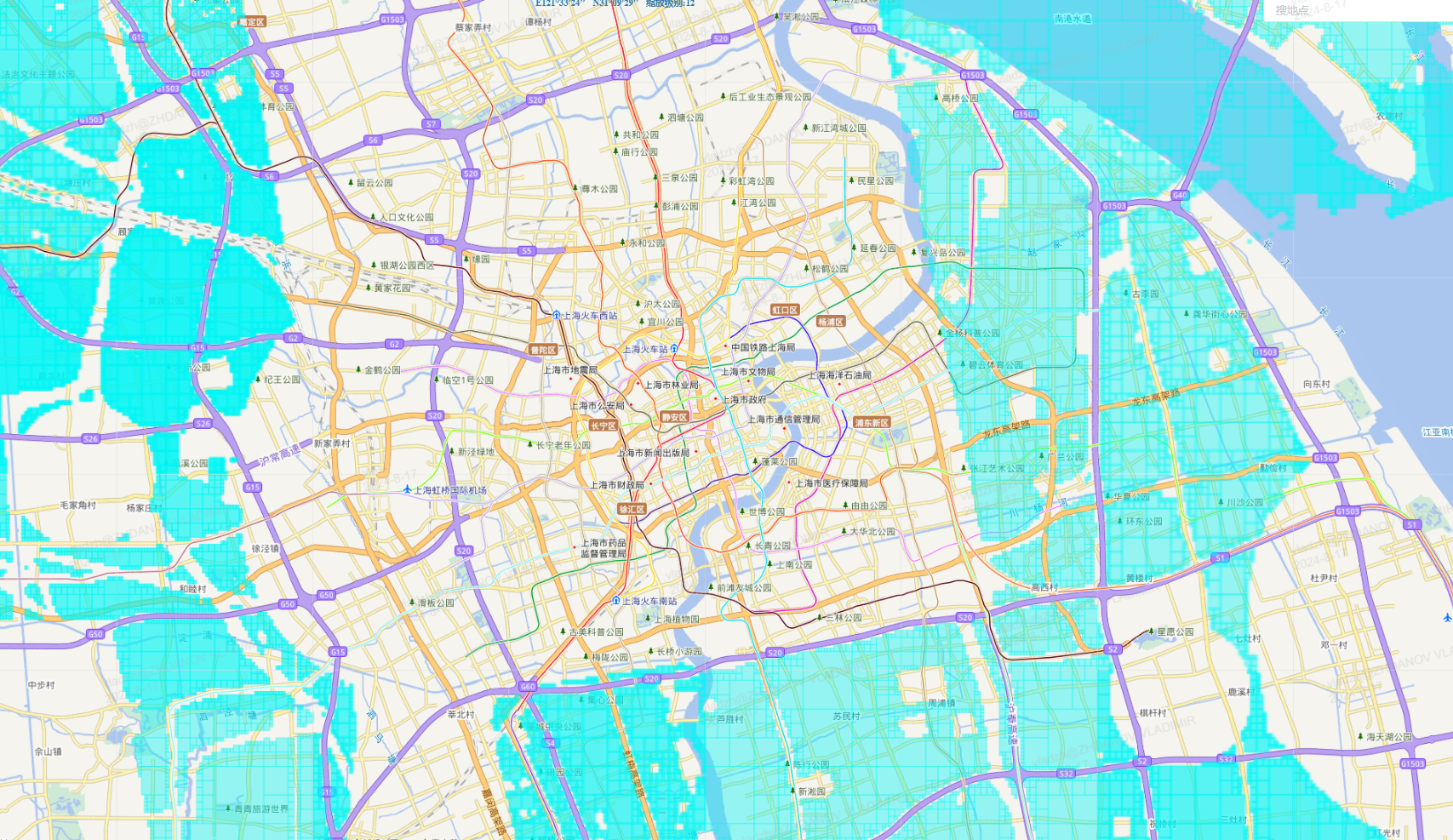
The map of flight zones is available on the UOM website under the section 运行管理 > 我的常飞空域. Of course, even in a free zone, there are restrictions. You cannot fly over highways, power plants, crowds of people, or in places where the government has temporarily decided to ban drone flights. Use common sense.
Flights in Restricted Zones
A restricted zone does not mean that you cannot fly there at all. Some formalities need to be observed. More on that below.
Drone Registration
Any drone (even those in the micro or light categories) must be registered on the UOM platform before flight. The full official name is 无人机驾驶航空器一体化综合监管服务平台 (民用无人驾驶航空器综合管理平台). This platform is part of the Civil Aviation Administration of China.
UOM Account
Visit the UOM website and register.
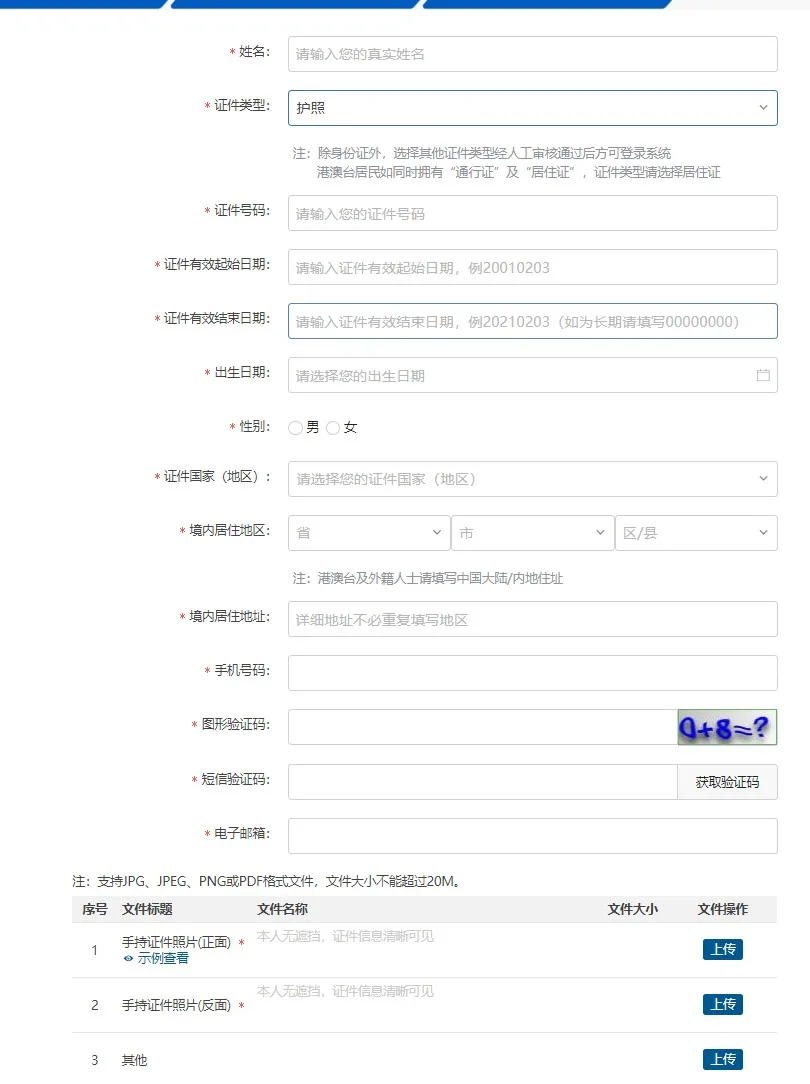
In the registration form, you’ll be asked to provide:
- Full name
- Passport details
- Address in China
- Phone and email
- Two photos with your passport (main page and visa or border crossing stamp if you are visa-free)
After registration, do not try to log in to your account immediately. Wait for an SMS confirming the successful activation of your account. If you are not a Chinese citizen, your registration request will be reviewed within 2 working days.
Adding a Drone
On the website or in the app, under the section 实名登记 (“real-name registration”), there is a form for registering a drone. 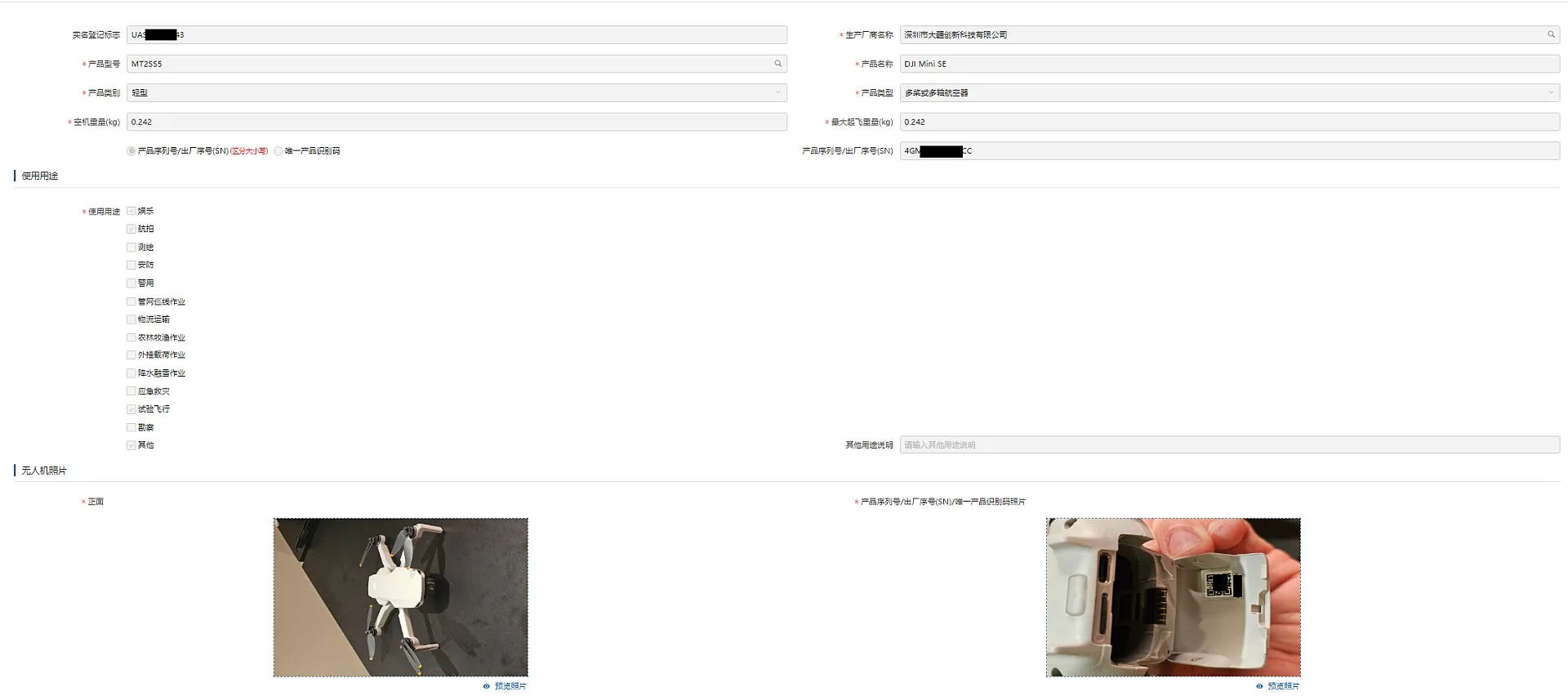 You’ll need to provide:
You’ll need to provide:
- Model
- Type
- Category
- Weight
- Manufacturer (in Chinese)
- Serial Number
- Purpose of use
- Two photos (general view and serial number)
If your drone is from DJI, it’s easier to start with the DJI Fly app, which simplifies filling out this form.
Information from DJI Fly
In the DJI drone management app, in the section Profile -> Device Management, you will find the CAAC Registration Status when you’re in China. 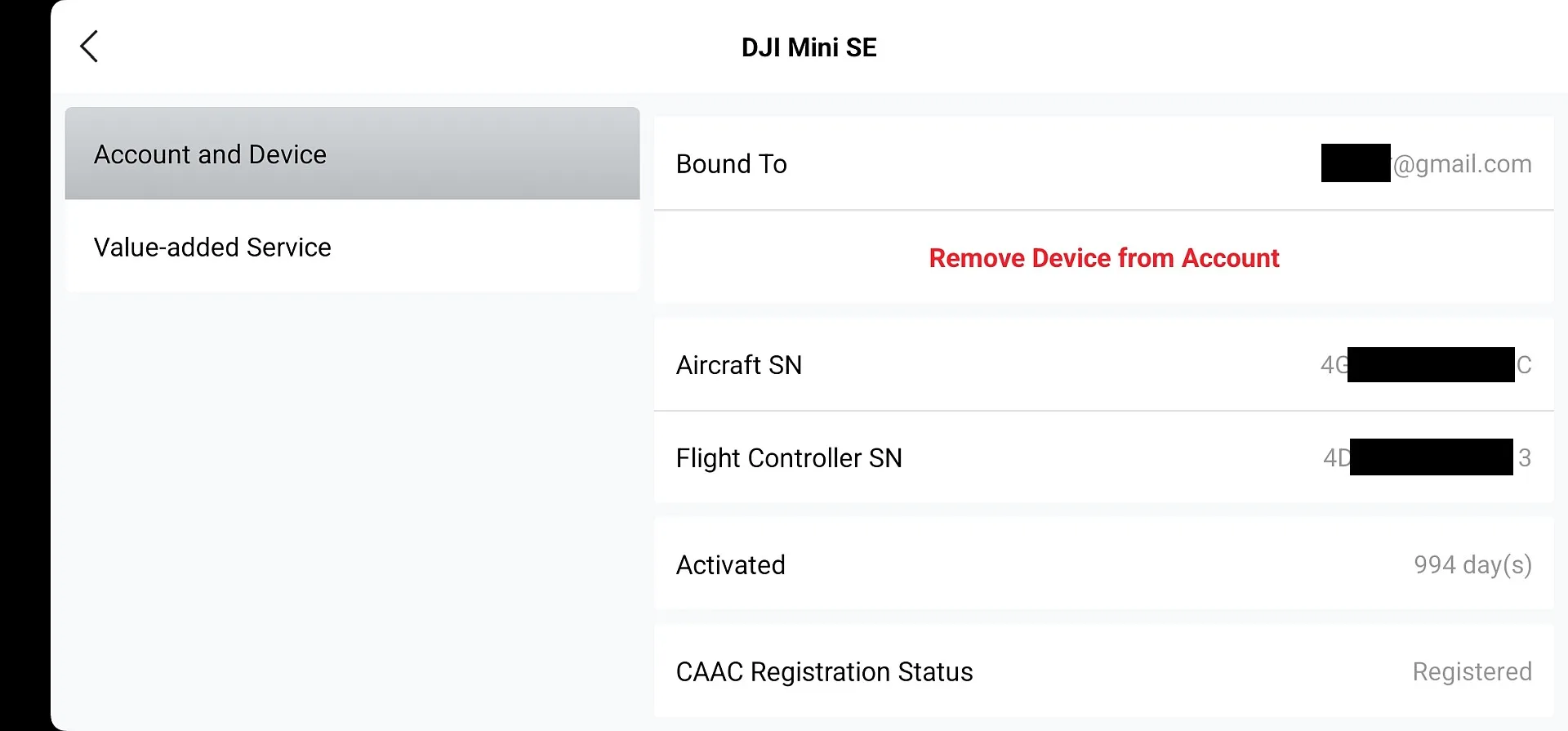 If your drone is unregistered, it will be in Unregistered status, and by clicking on this status, you will see brief registration instructions and a QR code. Save it and then register your drone from the UOM mobile app, so you don’t have to enter all the information about your drone manually. By the way, for flights over China, the DJI app will require you to transmit flight data in real-time to the Civil Aviation Administration. This means that you cannot turn off your phone’s data during the flight.
If your drone is unregistered, it will be in Unregistered status, and by clicking on this status, you will see brief registration instructions and a QR code. Save it and then register your drone from the UOM mobile app, so you don’t have to enter all the information about your drone manually. By the way, for flights over China, the DJI app will require you to transmit flight data in real-time to the Civil Aviation Administration. This means that you cannot turn off your phone’s data during the flight. 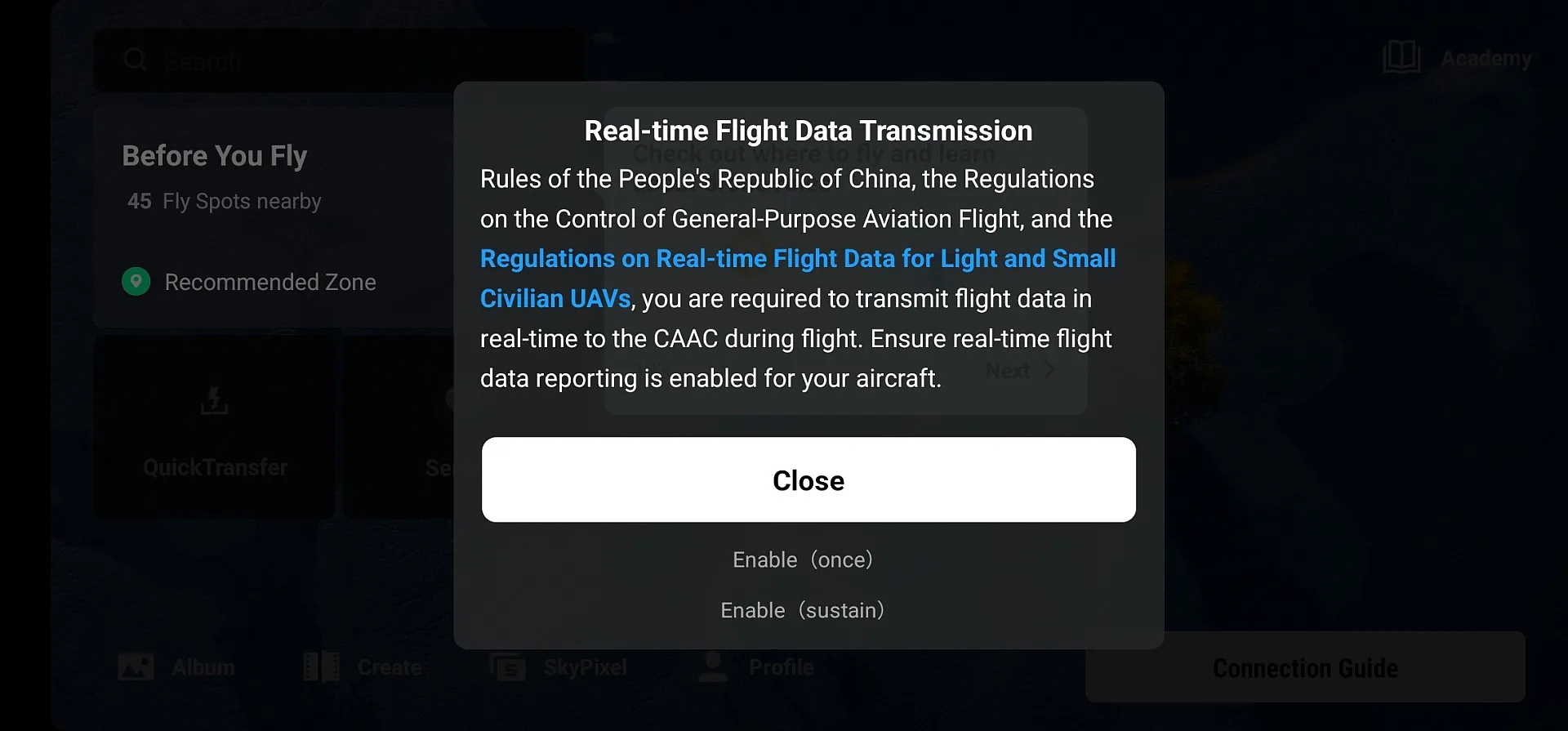 Now, you can launch this drone in a free zone. If you want to request permission to fly in a restricted zone, you will need to pass…
Now, you can launch this drone in a free zone. If you want to request permission to fly in a restricted zone, you will need to pass…
The Exam
It’s almost like a theoretical exam for driving a car. To be allowed to take the exam, you need to watch two video lessons.
Preparation
In the section 控制员资质 (“pilot certification”), find the item 在线视频培训 (“video lessons”) and watch both videos on light drones. 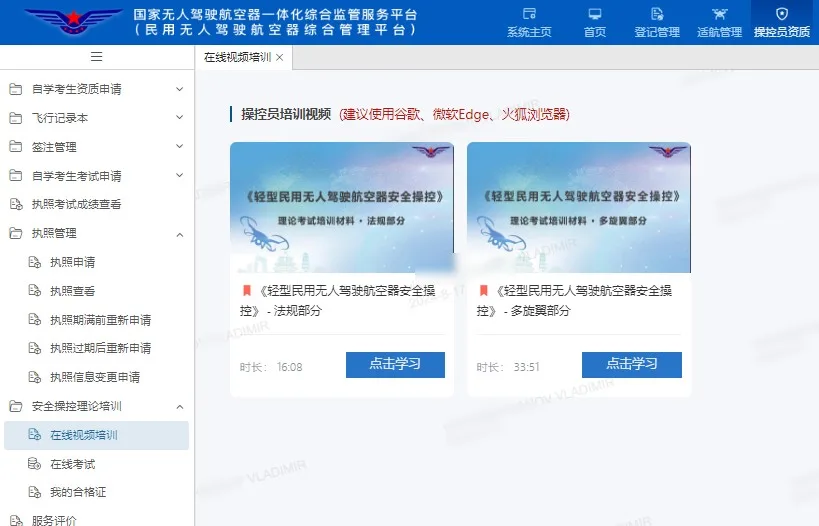
- Regulation Section (法规部分): Covers rules, prohibitions, penalties; 16 minutes.
- Multirotor Section (多旋翼部分): About the structure and operation of the drone; 34 minutes.
Watching these is mandatory. Until you’ve watched both videos from start to finish, the exam simply won’t open.
Taking the Exam
After watching the videos, open the section 在线考试 (“online exam”). The questions cover flight restrictions (where you can and cannot fly) and safe operation rules. Out of 50 questions (100 points), you need to answer at least 40 correctly (80 points). If you fail the first time, you can retake it immediately. However, incorrect answers won’t be shown. 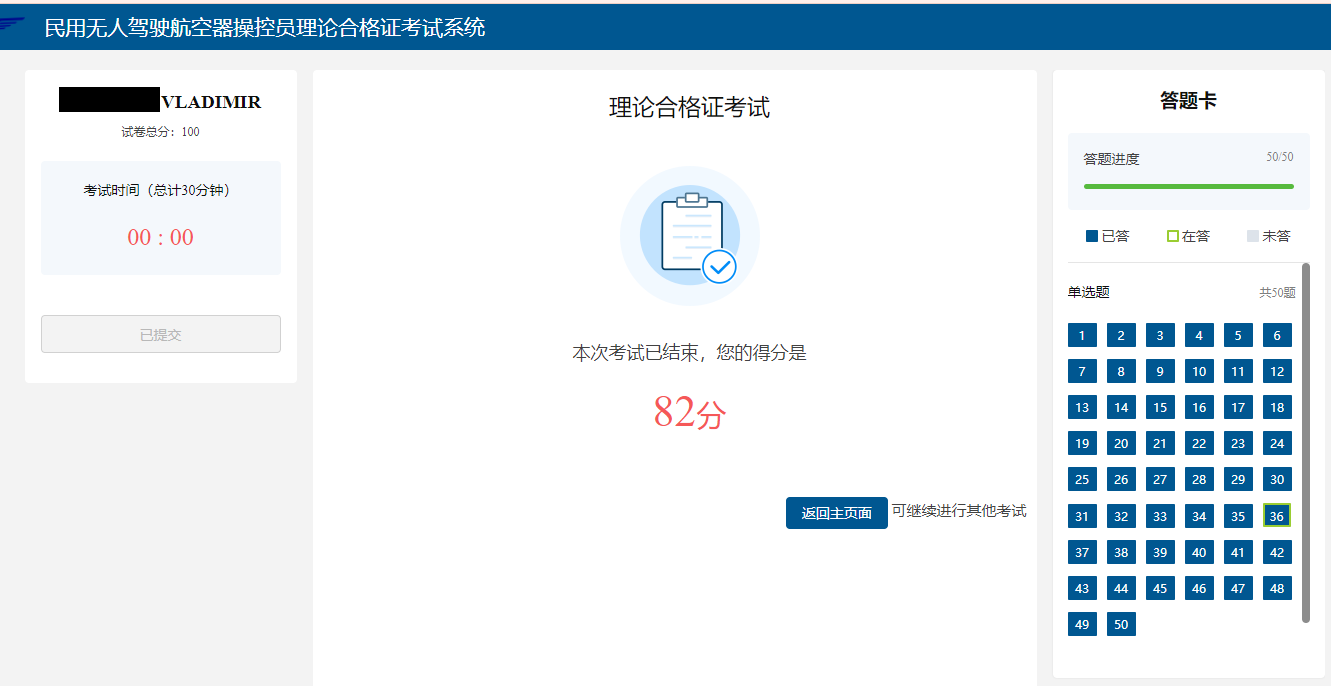 If you score the required points, a two-year certificate will appear in your account.
If you score the required points, a two-year certificate will appear in your account. 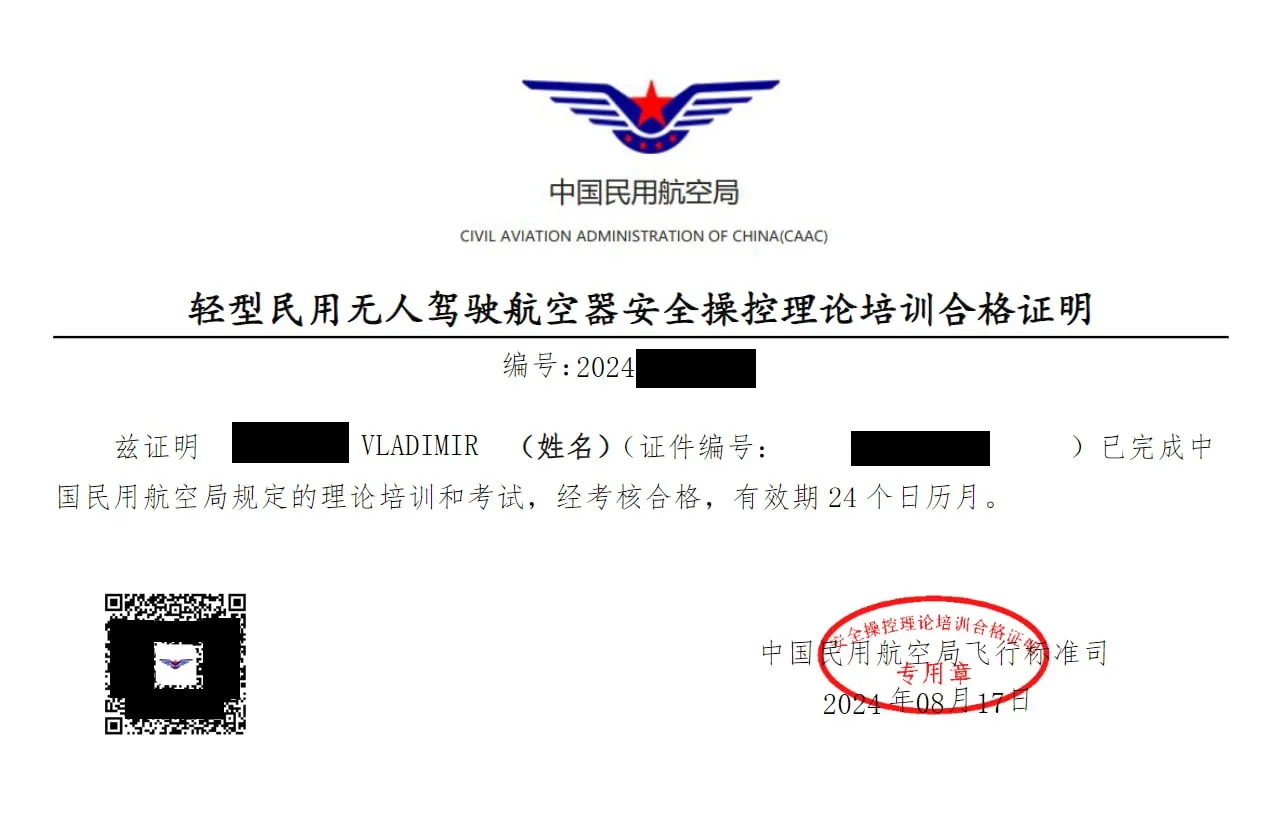 Unlike the Chinese driver’s license exam, this one does not include tricky legal questions, such as the exact fine amount for a violation. But it’s better to keep them in mind, especially if you’re a foreigner.
Unlike the Chinese driver’s license exam, this one does not include tricky legal questions, such as the exact fine amount for a violation. But it’s better to keep them in mind, especially if you’re a foreigner.
Penalties (Fines)
Here’s what awaits you for violating the rules:
-
Operating an unregistered drone: up to 200 RMB, and up to 20,000 RMB in severe cases.
-
Flying in a restricted zone without permission: Up to 500 RMB, in case of serious violations – from 1,000 to 10,000 RMB.
-
Significant drone modification: From 1 to 5 times the drone’s cost.
-
Disabling or modifying geofencing systems: From 2,000 to 20,000 RMB.
-
Owning or using drone jammers: Up to 50,000 RMB.
By the way, flying a drone after consuming alcohol is also prohibited: 0.04% alcohol in the blood (0.4‰) or higher is considered a violation.
Flight Notification
 For flights in restricted zones, you not only need to pass the exam but also submit a flight application. However, I haven’t been able to do this yet: either the UOM website is not fully operational, or the foreign user account is malfunctioning (a typical situation with any services in China). For now, I’ll be flying only in unrestricted zones. Once I figure out the notification process, I’ll update this material.
For flights in restricted zones, you not only need to pass the exam but also submit a flight application. However, I haven’t been able to do this yet: either the UOM website is not fully operational, or the foreign user account is malfunctioning (a typical situation with any services in China). For now, I’ll be flying only in unrestricted zones. Once I figure out the notification process, I’ll update this material.


